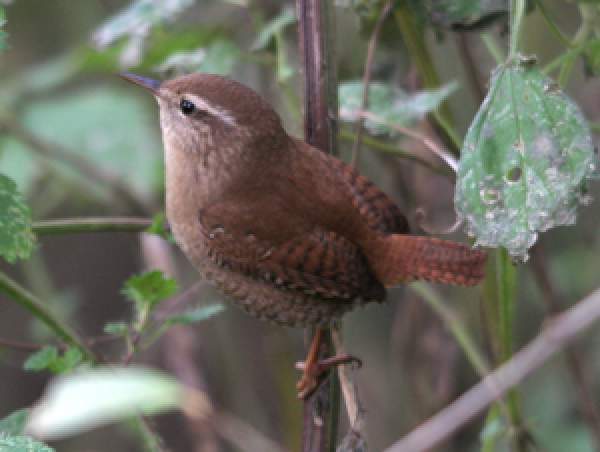Wren
Troglodytes troglodytes

The Wren is instantly recognisable as a tiny warm-brown bird with a restless nature, often seen holding its short, stubby tail erect. Although the Wren has a smaller wing length than a Goldcrest of Firecrest, it is a surprisingly stocky bird and is considerably heavier. When seen at close range, the delicate tones of the warm-brown plumage become visible as does the rather long bill and pale-coloured line above the eye (known as the supercilium). Rather surprisingly for a bird of this size, the Wren has a loud song, well-structured and consisting of a series of clear but shrill notes. Equally familiar is the scolding alarm call, a rapid chittering.
The Wren will nest in all sorts of nooks and crannies. In rocky areas, it lives up to its name Troglodytes (the cave dweller). In gardens, the nest is most often in ivy, creepers or other dense vegetation. Ordinary tit boxes are sometimes used, filled with a complete ball made of moss, leaves and grass. If you find a Wren nest without a feather lining, this will be one of several built by the male. Later, it may be accepted by the female, lined and then used – so don’t remove unused Wren’s nests.
Being such a small bird, means that Wrens can be particularly vulnerable to cold weather. Famously cold winters, like that of 1962—63, may knock our Wren population back to a fraction of its former size. Despite this vulnerability, however, the Wren maintains its numbers over the long term, thanks to their ability to fledge large numbers of young in a good summer.
Find out more about Wrens on BirdFacts and the Wider Countryside Report.






Share this page